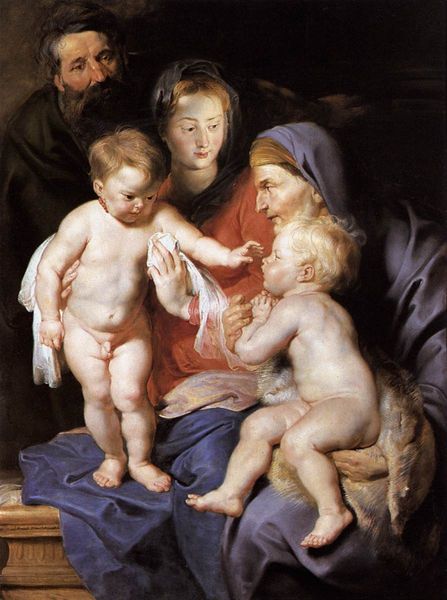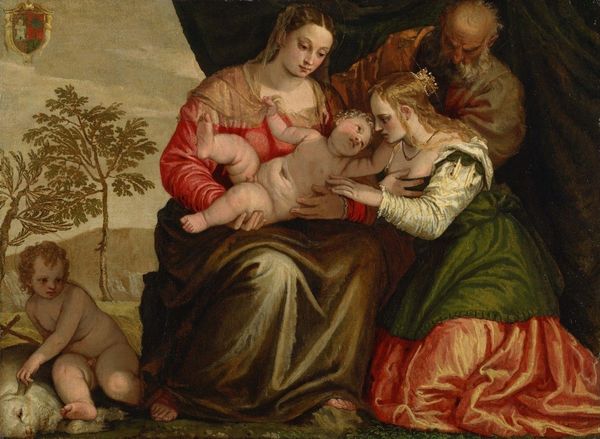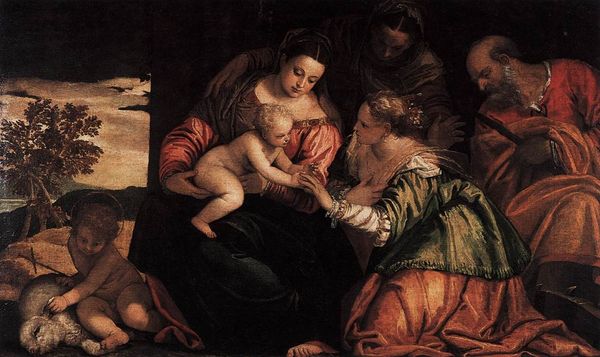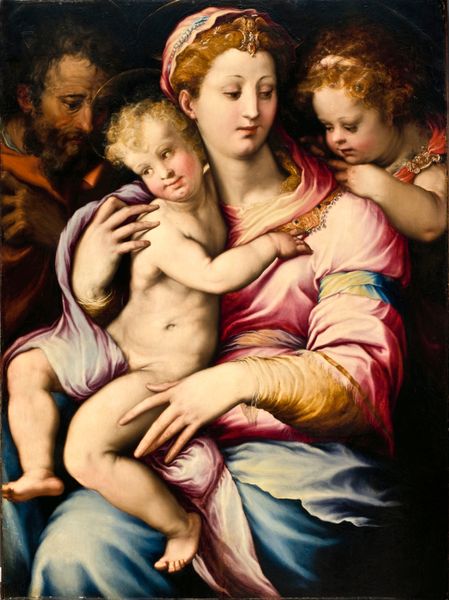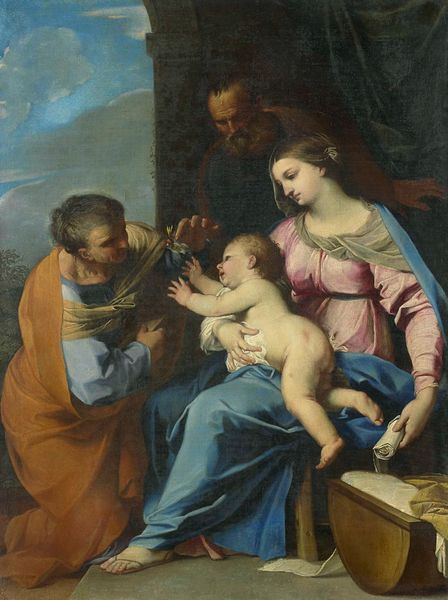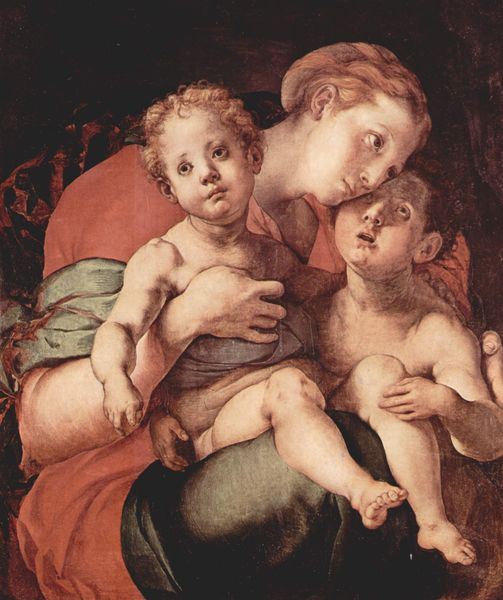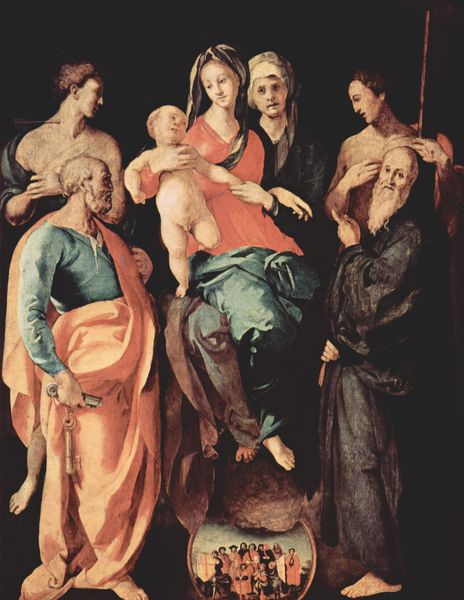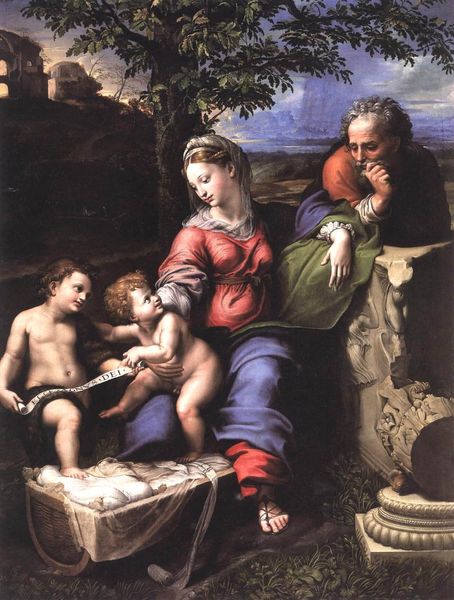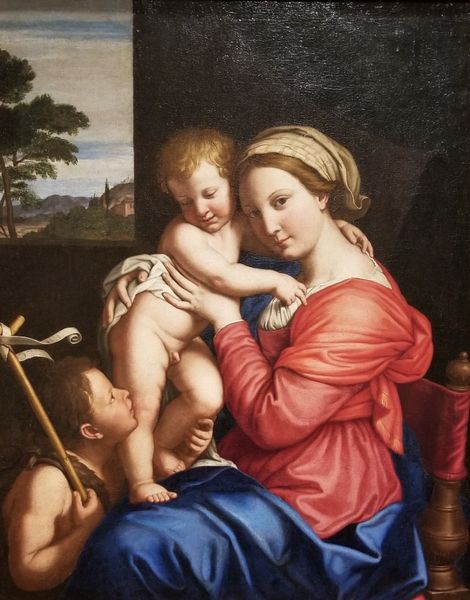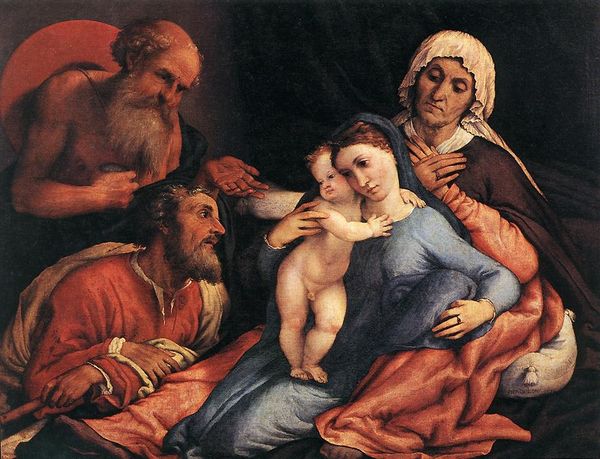
painting, oil-paint
#
painting
#
oil-paint
#
figuration
#
group-portraits
#
history-painting
#
italian-renaissance
Copyright: Public domain
Curator: This oil painting presents the Holy Family with the Infant St. John the Baptist and St. Elizabeth, attributed to Sassoferrato, though its exact date remains unconfirmed. Editor: My first impression is one of restrained solemnity. The composition is very controlled; it’s a tightly organized pyramid of figures emerging from a dark ground. Curator: Indeed, the artist employs a careful arrangement, guiding the viewer's eye upwards, beginning with the clustered children and leading to the more isolated figure of Joseph at the composition’s apex. What meaning do you draw from this visual order? Editor: The pyramid, of course, has long-standing associations with stability and unity. Here, the composition reinforces the concept of family, further highlighted through the shared expressions of pious devotion. There's also the strong color symbolism – the red and blue often representing divine love and truth associated with the Virgin. Curator: Agreed, the formal structure reinforces the narrative and symbolic elements, with color used as a key formal and semantic device. Look at the folds and drapery – rendered with great attention to detail – in contrast to the smoothness of skin and faces. Sassoferrato directs attention using light, texture, and shape. The artist brings our eye to the primary relationships. Editor: That's right; these figures and colours become almost archetypal. We recognize immediately the motifs and implied narratives. John the Baptist, even as an infant, brings with him the expectation of future events through the visual codes the artist evokes. Notice also Joseph at the back with the staff. This alludes to the Exodus. Curator: His stance and gaze direct the viewer's perception, leading them along paths defined by these forms. Sassoferrato draws upon formal principles and classical ideals to portray profound meaning. The balance achieved underscores the stability of faith. Editor: Yes, I see how he uses traditional symbolism while simplifying the forms and clarifying the visual plane. A study in human relations, filtered through sacred themes and given structural support with visual language. It reveals a persistent reliance on traditional iconography. Curator: It gives one much to ponder about our ongoing need for these images, and how we create patterns to both understand and portray complex interactions. Editor: Precisely! And a chance to meditate on how artists shape cultural memories into visible form, across different times and places.
Comments
No comments
Be the first to comment and join the conversation on the ultimate creative platform.
